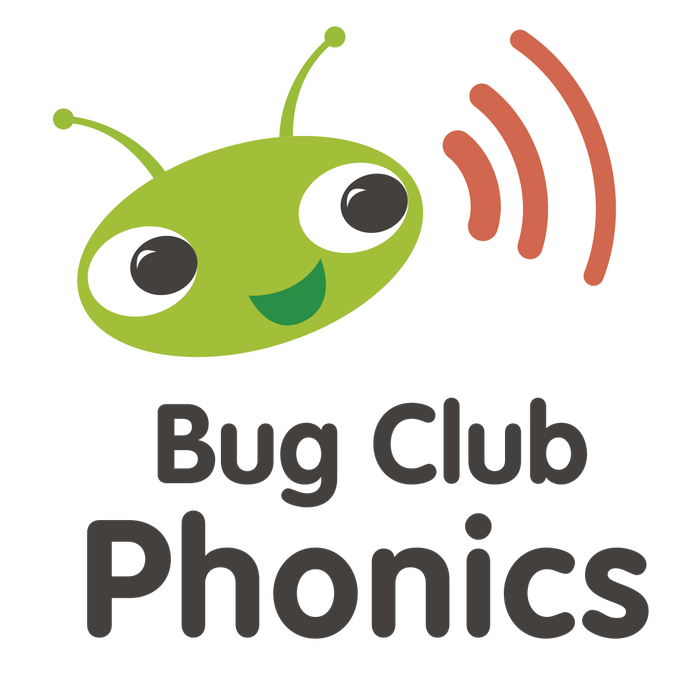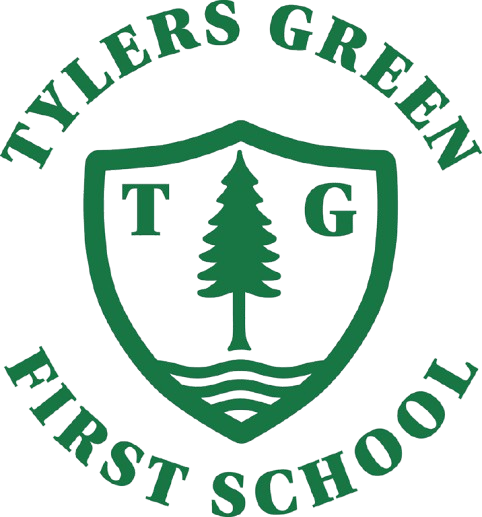How we teach phonics
What we teach term by term
Guide to saying the sounds in Bug Club
Overview of Bug Club Phonics for parents and carers
Find out what Bug Club Phonics is all about
Bug Club information
- How to log in to Bug Club at home
- Overview of the Bug Club scheme
- How Bug Club books link to phonics

We use Bug Club as our Phonics scheme and our Reading Scheme.
We love the variety of books, the phonics games and the "read to me" feature!
This scheme means that Teachers can set books at just the right level for your child.
In Year 1 and 2 children can get to "gold" for reading every day!
What is phonics?
Words are made up from small units of sound called phonemes. Phonics teaches children to be able to listen carefully and identify the phonemes that make up each word. This helps children to learn to read words and to spell words.
In Phonics lessons children are taught three main things:
- Grapheme Phoneme Correspondence
Grapheme phoneme correspondence simply means that they are taught all the phonemes (sounds) in the English language and ways of writing them down. These sounds are taught in a particular order. The first sounds to be taught are s, a, t, p. - Blending
Children are taught to be able to blend. This is when children say the sounds that make up a word and are able to merge the sounds together until they can hear what the word is. This skill is vital in learning to read. - Segmenting
Children are also taught to segment. This is the opposite of blending. Children are able to say a word and then break it up into the phonemes that make it up. This skill is vital in being able to spell words.
What makes Phonics tricky?
In some languages, learning phonics is easy because each phoneme (sound) has just one grapheme (way of writing) to represent it. The English language is a bit more complicated than this. This is largely because England has been invaded so many times throughout its history. Each set of invaders brought new words and new sounds with them.
As a result, English only has around 44 phonemes (sounds) but there are around 120 graphemes or ways of writing down those 44 phonemes. Obviously we only have 26 letters in the alphabet so some graphemes are made up from more than one letter.
For example ch th oo ay (these are all digraphs - graphemes with two letters. There are other graphemes that are trigraphs (made up of 3 letters) and even a few made from 4 letters.
Another slightly sticky problem is that some graphemes can represent more than one phoneme. For example: ch makes very different sounds in these three words: chip, school, chef.
Why learn Phonics?
Phonics teaches children how to crack a code – to be able to decode text and thus giving them the tools to expand their experiences. In the past people argued that because the English language is so tricky, there was no point teaching children Phonics. Now, most people agree that these tricky bits mean that it is even more important that we teach Phonics and children learn it clearly and systematically.
When following our phonics programme the children build on their prior learning systematically. Each lesson follows the same consistent approach. Below you can view the progression from Phase 1 to Phase 6.
Phonics progression
Phonics is taught progressively in phases from phase 1 to phase 6. Children at Tylers Green First School begin phase 2 when they start in Reception, moving through the school to phase 6 in Year 2.
Phase One - pre-school
Phase One falls largely within the Communication, Language and Literacy area of learning in the Early Years Foundation Stage. In particular, it will support linking sounds and letters
in the order in which they occur in words, and naming and sounding the letters of the alphabet.
Phase Two
Children entering Phase Two will have experienced a wealth of listening activities, including songs, stories and rhymes. They will be able to distinguish between speech sounds and many will be able to blend and segment words orally. Some will also be able to recognise spoken words that rhyme and will be able to provide a string of rhyming words, but inability to do this does not prevent moving on to Phase Two as these speaking and listening activities continue.
The purpose of this phase is to teach at least 20 graphemes, and move children on from oral blending and segmentation to blending and segmenting with letters.
|
Unit |
Graphemes |
Tricky words |
|
1 |
s a t p |
|
|
2 |
i n m d |
|
|
3 |
g o c k |
to |
|
4 |
ck e u r |
the no go |
|
5 |
h b f ff l ll ss |
I into |
By the end of the phase many children should be able to read some VC (vowel-consonant) and CVC (consonant-vowel-consonant) words like am and cat and to spell them either using magnetic letters or by writing the letters on paper or on whiteboards.
During the phase they will be introduced to reading two-syllable words and simple captions. They will also learn to read some ‘tricky’ words that can’t be sounded out: to the no go I into
Phase 3
Children entering Phase Three will know around 19 graphemes and be able to blend phonemes to read VC words and segment VC words to spell. While many children will be able to read and spell CVC words, they all should be able to blend and segment CVC words orally.
|
Unit |
Graphemes |
Tricky words |
|
6 |
j v w x |
me be |
|
7 |
y z, zz qu |
he my by |
|
8 |
ch sh th ng |
they she |
|
9 |
ai ee igh oa oo (long) oo (short) |
we are |
|
10 |
ar or ur ow oi |
you her |
|
11 |
ear air ure er |
all was |
The purpose of this phase is to teach another 25 graphemes, most of them comprising two letters (e.g. oa), so the children can represent each of about 42 phonemes by a grapheme (the additional phoneme /zh/ found in the word vision will be taught at Phase Five).
Children also continue to practise CVC blending and segmentation in this phase and will apply their knowledge of blending and segmenting to reading and spelling simple two-syllable words and captions. They will learn letter names during this phase, learn to read some more tricky words and also begin to learn to spell some of these words.
Phase 4
Children entering Phase Four will be able to represent each of 42 phonemes by a grapheme, and be able to blend phonemes to read CVC words and segment CVC words for spelling. They will have some experience in reading simple two-syllable words and captions. They will know letter names and be able to read and spell some tricky words.
|
unit |
Graphemes |
Tricky words |
|
12 |
No new graphemes – consolidating adjacent consonants and words with more than one syllable |
Said have like do so some come were there little one when out what |
The purpose of this phase is to consolidate children’s knowledge of graphemes in reading and spelling words containing adjacent consonants and polysyllabic words.
Phase 5
Children entering Phase Five are able to read and spell words containing adjacent consonants and some polysyllabic words (like lunchbox or magnetic).
|
Unit |
Graphemes |
Tricky words |
|
13 |
zh wh ph |
oh their |
|
14 |
ay a-e eigh/ey/ai (long a) |
Mr Mrs |
|
15 |
ea e-e ie/ey/y (long e) |
looked called asked |
|
16 |
ie i-e y I (long i) |
water where |
|
17 |
ow o-e o/oe (long o) |
who again |
|
18 |
ew ue u-e (long u) u/oul (short u) |
thought through |
|
19 |
aw au al |
work laughed because |
|
20 |
ir er ear |
Thursday Saturday thirteen thirty |
|
21 |
ou oy |
different any many |
|
22 |
ere/eer are/ear |
eyes friends |
|
23 |
c k ck ch |
two once |
|
24 |
ce/ci/cy sc/stl se |
great clothes |
|
25 |
ge/gi/gy dge |
it’s I’m I’ll I’ve |
|
26 |
le mb kn/gn wr |
don’t can’t didn’t |
|
27 |
tch sh ea (w)a o |
first second third |
The purpose of this phase is for children to broaden their knowledge of graphemes and phonemes for use in reading and spelling. They will learn new graphemes and alternative
pronunciations for these and graphemes they already know, where relevant. Some of the alternatives will already have been encountered in the high-frequency words that have
been taught.
Children become quicker at recognising graphemes of more than one letter in words and at blending the phonemes they represent. When spelling words they will learn to choose the appropriate graphemes to represent phonemes and begin to build word-specific knowledge of the spellings of words.
Phase 6
By the beginning of Phase Six, children should know most of the common grapheme–phoneme correspondences (GPCs). They should be able to read hundreds of words,
doing this in three ways:
■ reading the words automatically if they are very familiar;
■ decoding them quickly and silently because their sounding and blending routine is
now well established;
■ decoding them aloud.
Children’s spelling should be phonemically accurate, although it may still be a little unconventional at times. Spelling usually lags behind reading, as it is harder.
During this phase, children become fluent readers and increasingly accurate spellers.
